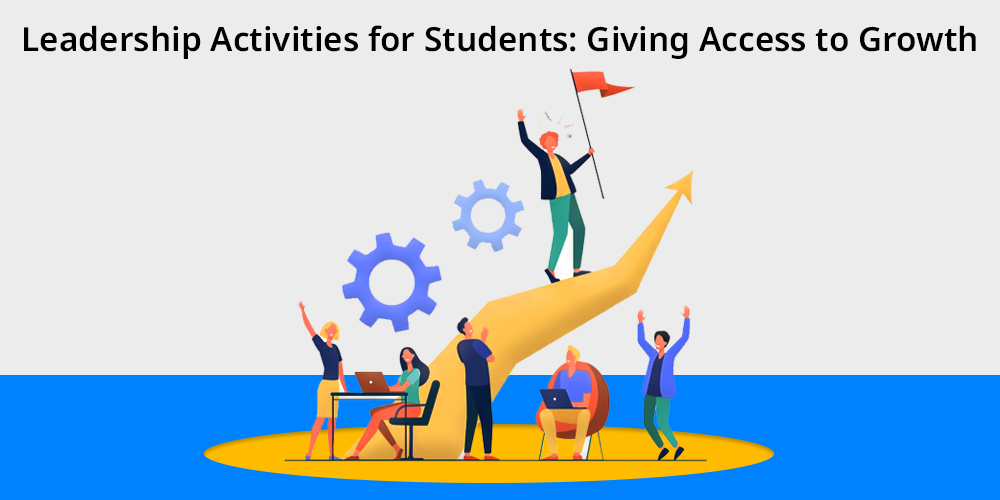
Leadership stands as an essential capability which determines how future individuals together with societies will develop. Early development of leadership qualities can prepare children for the future adversities, leading to success.
Leading to growth potential enables additional educational achievements as well as new pathways for social advancement.
Through leadership activities students develop vital skills that encompass communication skills, decision-making, responsibility handling, and team-based competencies.
Students who build these abilities early gain better preparations to face upcoming challenges across their school life and external environments.
The following guide will investigate significant student leadership task examples along with the necessary skills for leadership positions.
Contents
Leadership Activities: Definition and Characteristics
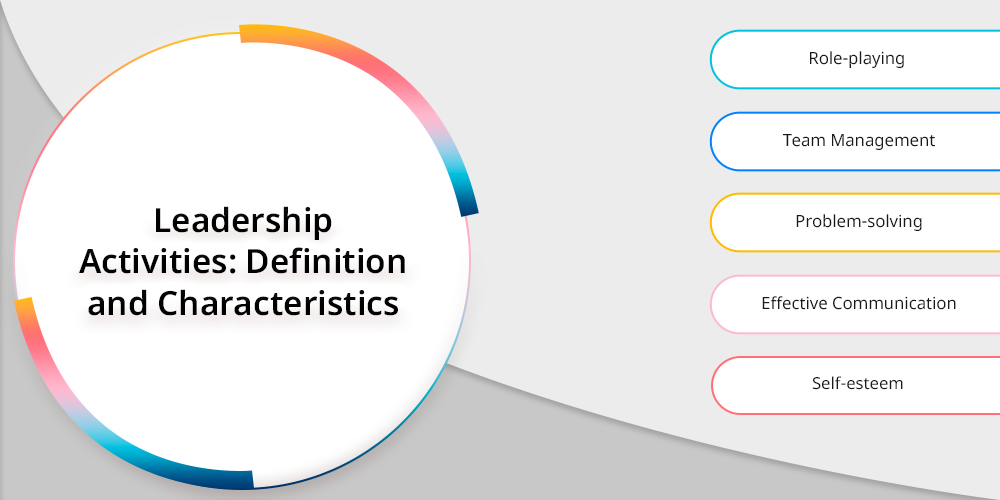
Exercises aimed at cultivating effective leadership techniques and enhancing leadership abilities are called leadership activities.
They need active participation, frequently involving role-playing and problem-solving exercises. These work along to improve abilities like teamwork, communication, and strategic thinking.
Student leadership programs deliver structured undertaking or projects which develop abilities like initiative, accountability, and problem-solving abilities.
Read how to improve problem solving skills here.
The activities can occur in multiple locations from school clubs to sports teams leading to community events or independent projects.
Below mentioned characteristics consist of five fundamental student leadership qualities.
1. Role-playing
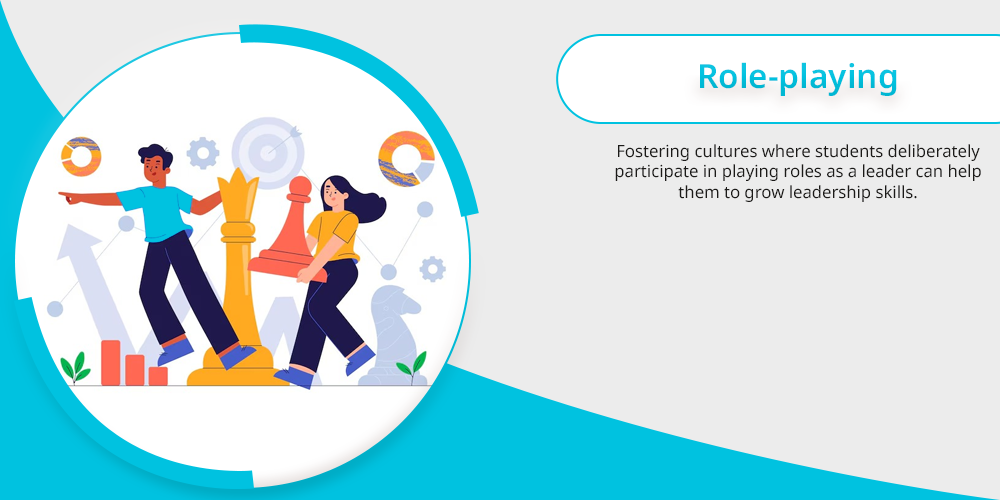
Fostering cultures where students deliberately participate in playing roles as a leader can help them to grow leadership skills.
Leadership activities function to put responsibility in students’ hands which enables them to lead their groups or projects.
Below mentioned characteristics consist of five fundamental student leadership qualities .
2. Team Management
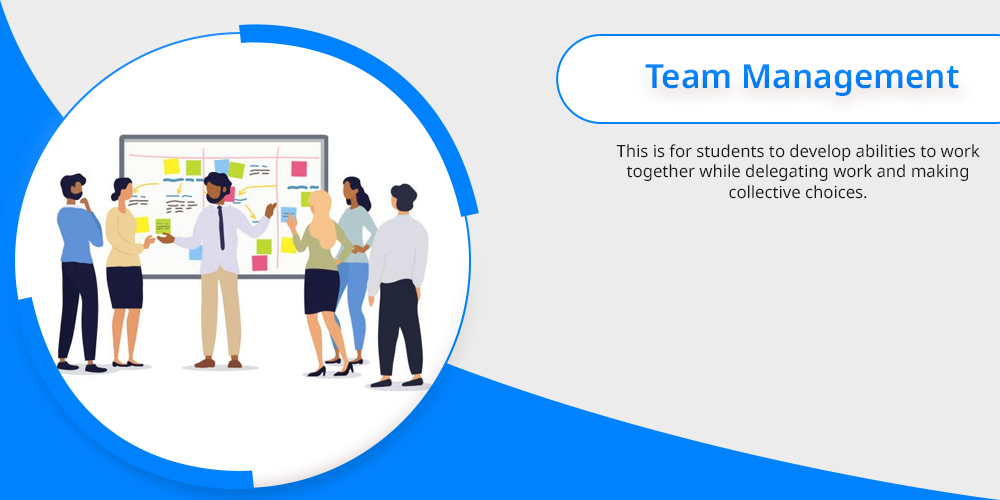
The majority of leadership activities demand teamwork.
This is for students to develop abilities to work together while delegating work and making collective choices.
3. Problem-solving
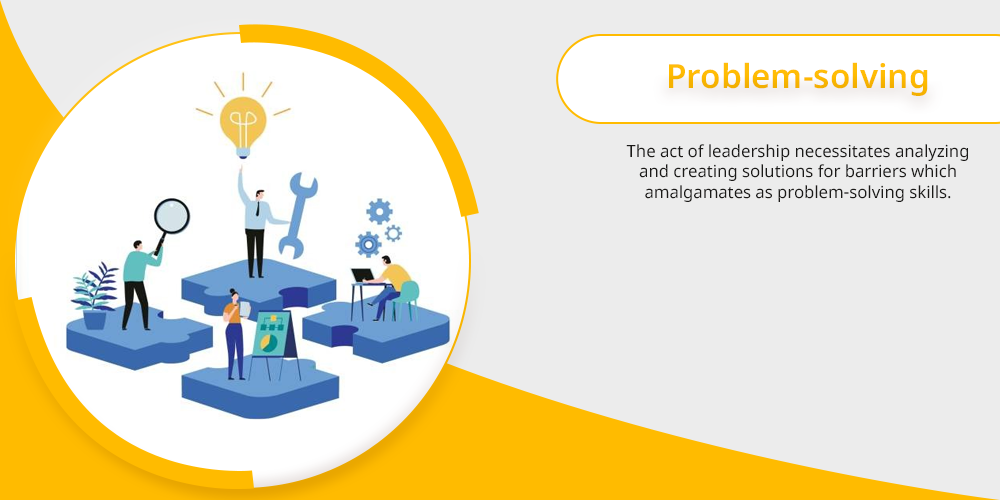
The act of leadership necessitates analyzing and creating solutions for barriers which amalgamates as problem-solving skills.
Through leadership activities students develop skills for handling difficulties through innovative resolution.
4. Effective Communication

To be effective leaders one must express their thoughts with clarity, and this is what includes communicating with efficacy.
Leadership activities enhance the development of both spoken and unspoken communication skills.
Before learning effective ways of interaction, go through the importance of communication skills on a broader perspective.
5. Self-esteem
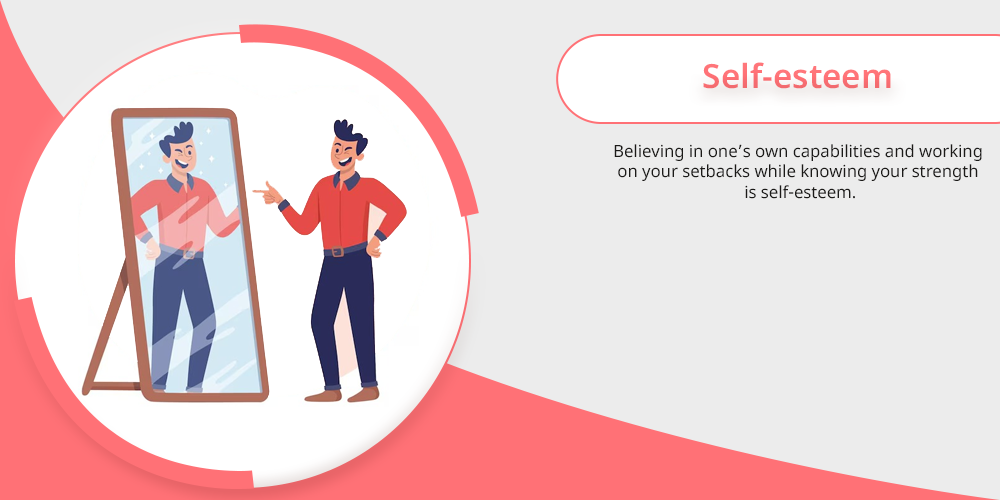
Believing in one’s own capabilities and working on your setbacks while knowing your strengths is self-esteem.
Leadership experiences enable students to build confidence regarding their ability to make choices and their power to influence others.
For building self efficacy, coding for kids is a great solution. Read more on how Coding Influences your students Self-esteem to get a bigger view for integrating self confidence.
10 Leadership Activities for Students
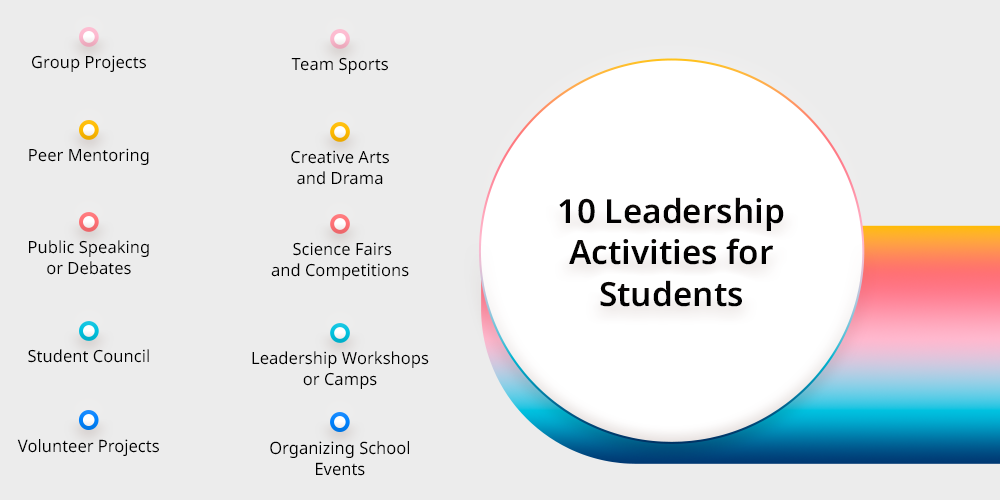
1. Group Projects
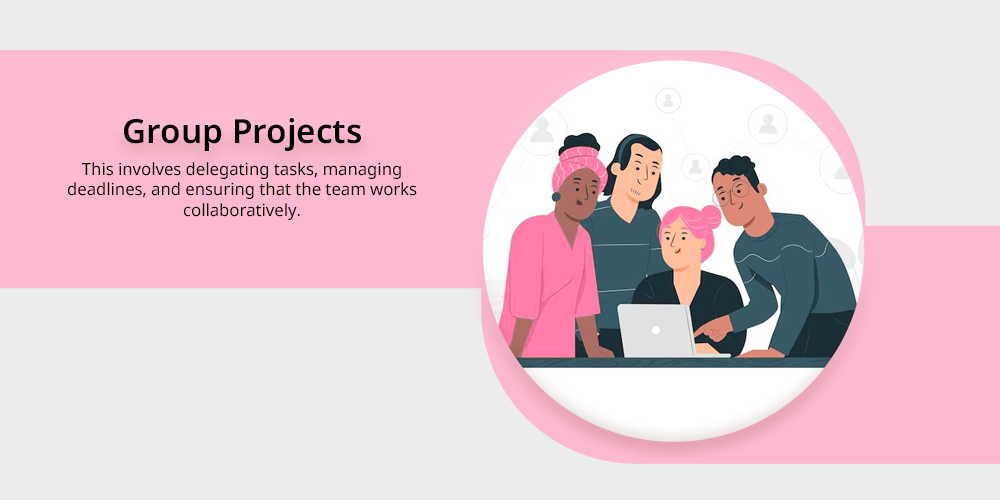
A classic way to practice leadership is by assigning students a group project. Here, one student can take the role of the project leader.
This involves delegating tasks, managing deadlines, and ensuring that the team works collaboratively.
Group projects can be centered around academic topics or extracurricular interests. Sometimes you may even go for the online group projects in digital settings .
2. Peer Mentoring
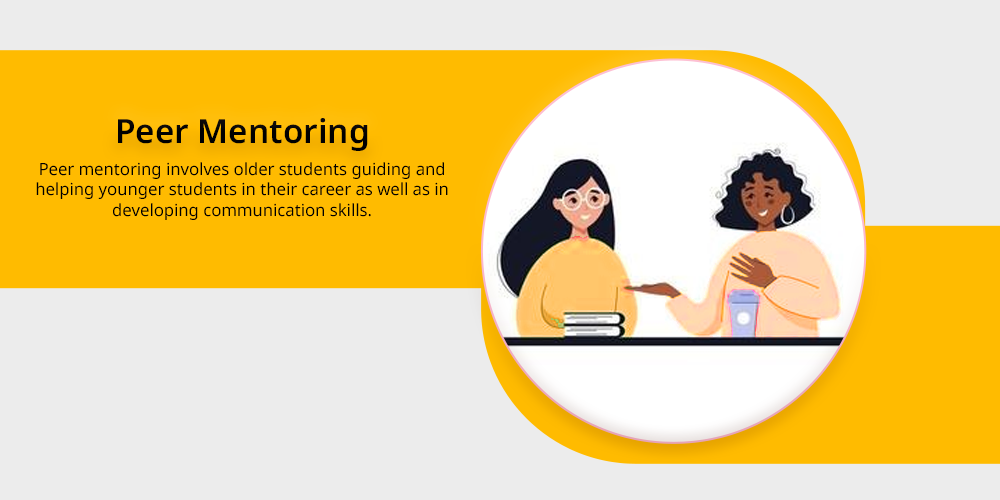
Peer mentoring involves older students guiding and helping younger students in their career as well as in developing communication skills.
This activity helps develop a sense of responsibility and collaboration, led by peer-to-peer education.
Here, the mentors are required to share knowledge, provide support, and lead by example setting.
3. Public Speaking or Debates

Organizing public speaking events or debates is a fantastic way to practice leadership. Students need to prepare, organize their thoughts, and present them in front of an audience.
This boosts confidence, persuasive communication, and critical thinking skills. Not only public speaking, help your kids by exploring more on how to build confidence in children.
4. Student Council
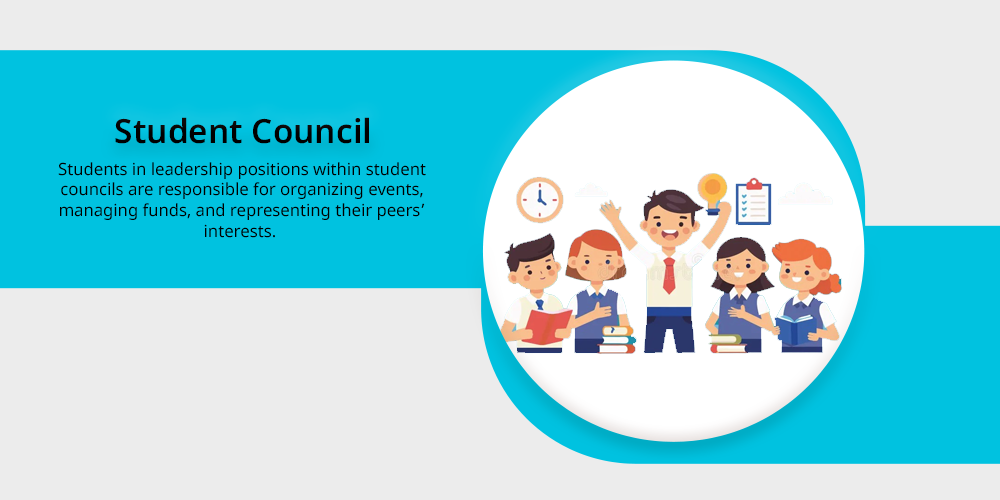
Being a part of the student council is a significant leadership activity.
Students in leadership positions within student councils are responsible for organizing events, managing funds, and representing their peers’ interests.
This gives students hands-on experience in leadership and teamwork. Thus, making students capable of making single-handed decisions leading to best possible outcomes.
5. Volunteer Projects
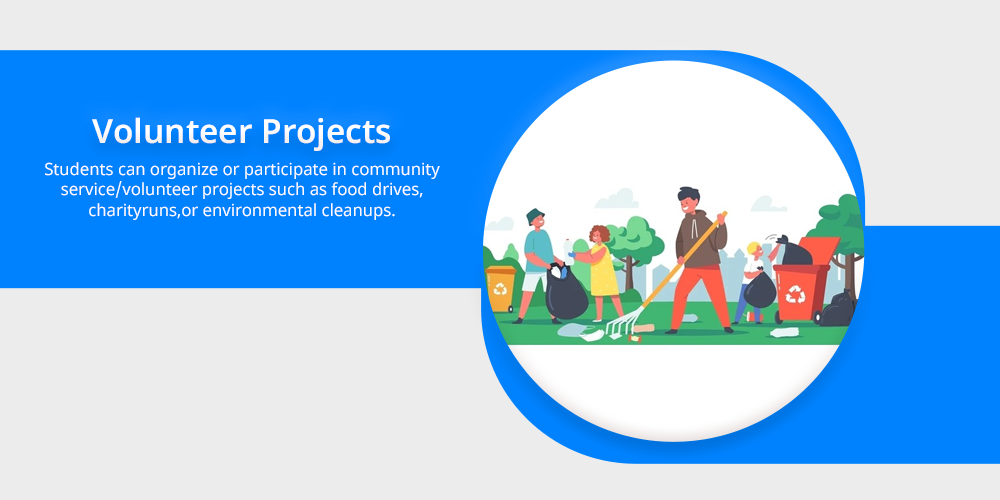
Students can organize or participate in community service/volunteer projects such as food drives, charity runs, or environmental cleanups.
These activities develop organizational and leadership skills while instilling a sense of responsibility and empathy.
6. Team Sports
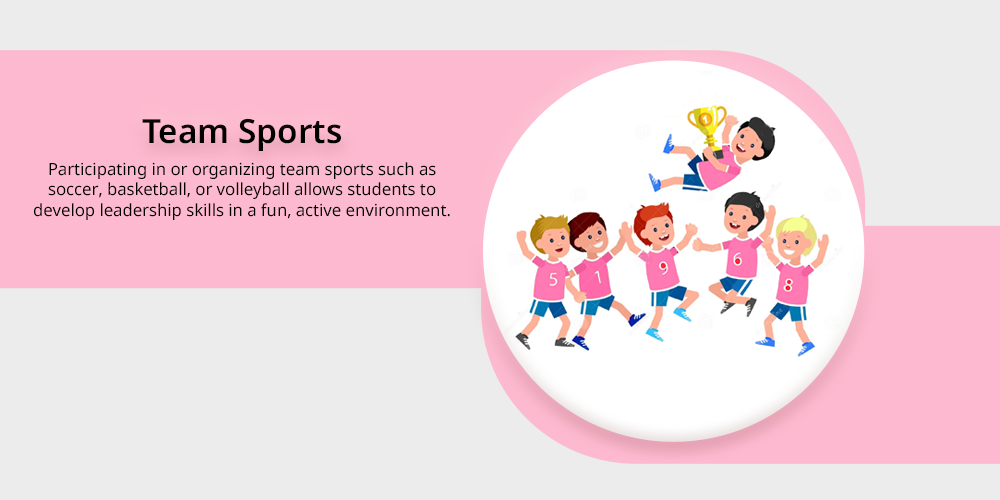
Participating in or organizing team sports such as soccer, basketball, or volleyball allows students to develop leadership skills in a fun, active environment.
Being a team captain requires motivating others, making quick decisions, and managing different personalities.
Read more to enlighten yourself with the importance of playing team sports.
7. Creative Arts and Drama
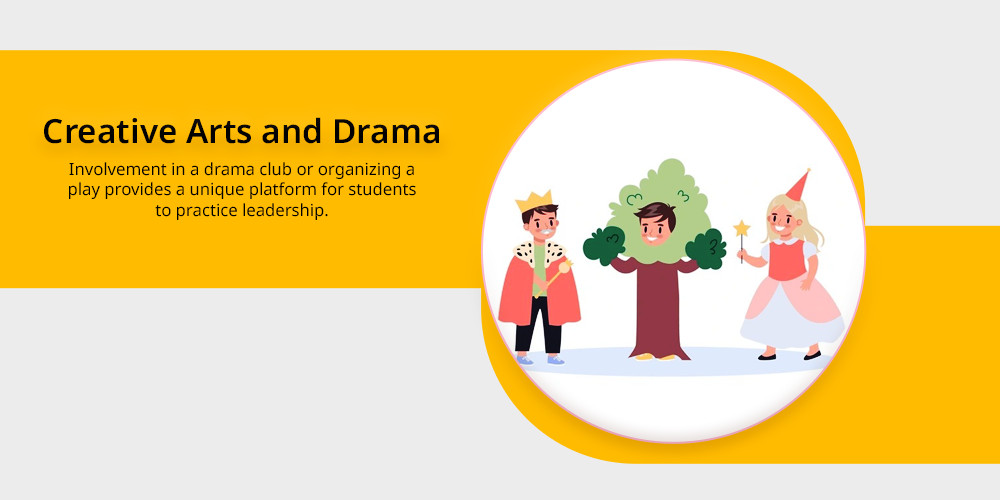
Involvement in a drama club or organizing a play provides a unique platform for students to practice leadership.
Students take on the roles of directors, producers, or stage managers, honing skills like problem-solving, team coordination, and creative thinking.
8. Science Fairs and Competitions
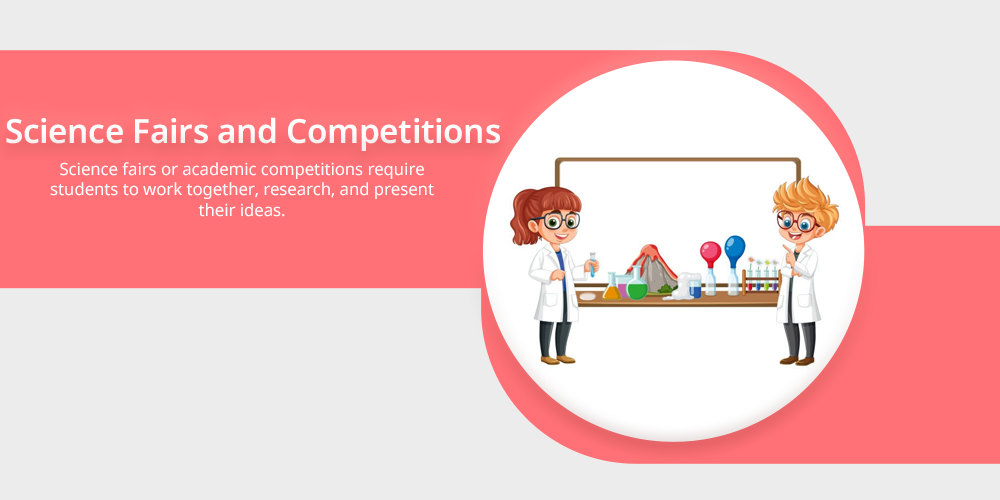
Science fairs or academic competitions require students to work together, research, and present their ideas. Students can lead their teams, ensuring everyone contributes and that the group stays on track.
To understand why actively participating in competitions is encouraged so much in the modern period, go through competency-based education.
9. Leadership Workshops or Camps
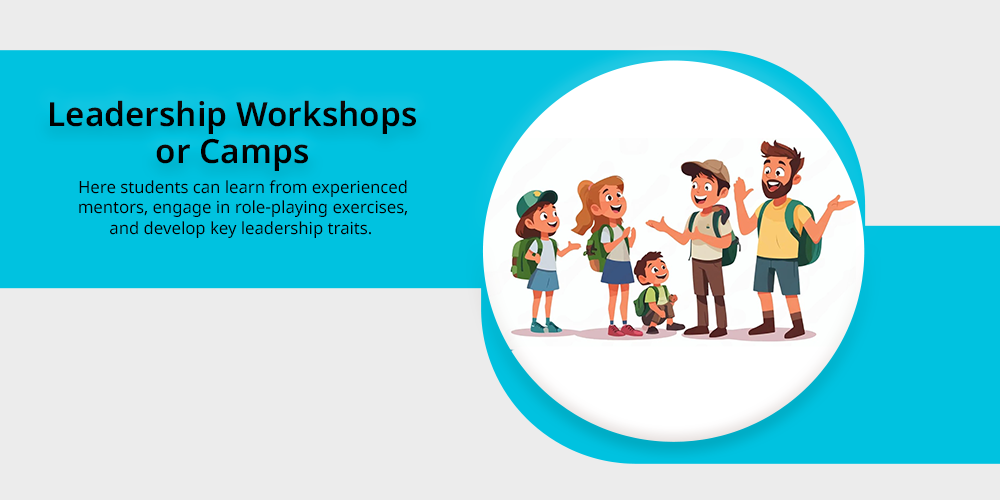
Many schools and organizations offer leadership camps or workshops. Here students can learn from experienced mentors, engage in role-playing exercises, and develop key leadership traits.
These programs are typically fun and interactive, with a focus on students’ personality development and teamwork.
10. Organizing School Events
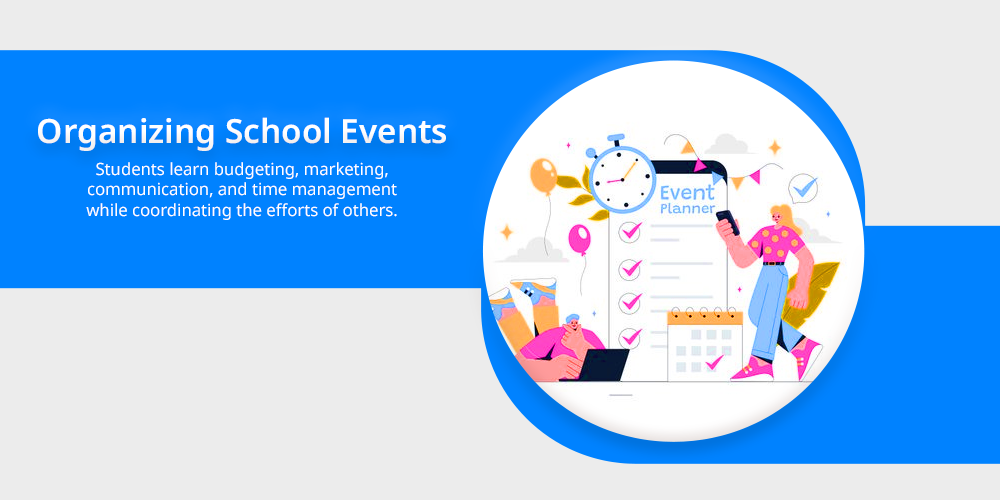
From organizing a talent show to planning a school dance or fundraiser, leading a school event involves overseeing many aspects of the planning process.
Students learn budgeting, marketing, communication, and time management while coordinating the efforts of others.
Also read How to Develop Leadership Skills in Students to learn the successful strategies of making students future leaders.
Importance of Leadership Projects for Students
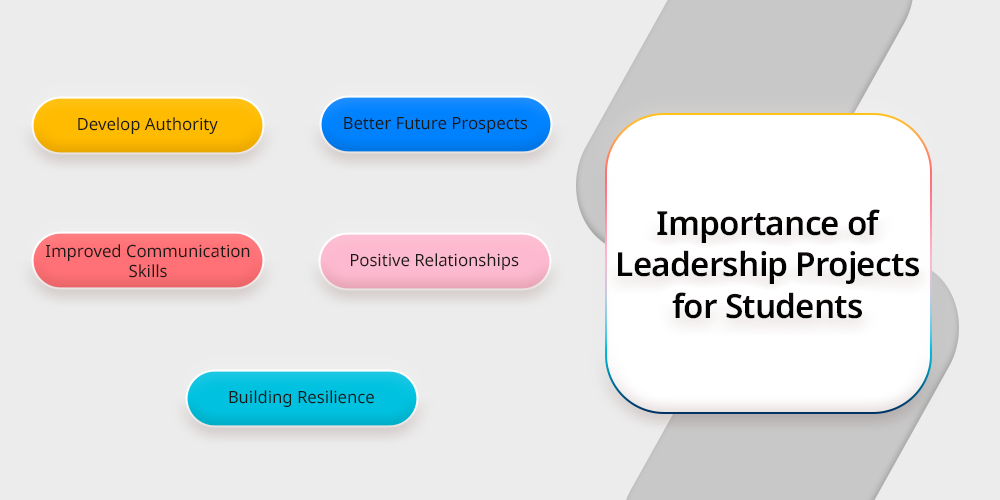
Leadership projects go beyond academic achievements defining its critical nature in the present times. Their focus is generally on practical hands-on experience and teaching valuable lifelong learning.
Learn importance of leadership in education .
Dive deeper into the realms of practical knowledge vs theoretical knowledge to understand the disparities and importance of the two. This will let you navigate as to why leadership is encouraged as a life skill.
These skills are further engrained by students and can be used both during their school years and later in their careers. The benefits of early childhood education while engaging in leadership projects include:
1. Develop Authority
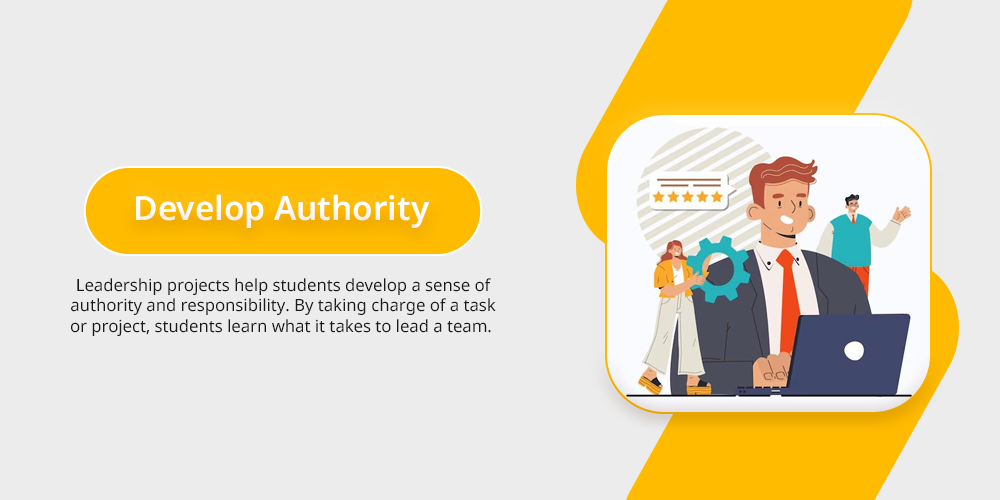
Leadership projects help students develop a sense of authority and responsibility. By taking charge of a task or project, students learn what it takes to lead a team.
These skills encourage other aspects of guiding and making decisions that impact the outcome of the project. This builds their confidence in making tough decisions and standing by their actions.
2. Better Future Prospects

Having leadership experience sets students apart in their future aspects like academic or professional pursuits. Colleges and employers look for individuals who can lead teams, solve problems, and manage projects.
Leadership skills are critical for success in virtually any career. Thus, making leadership projects essential for students aiming for competitive opportunities like career growth or pursuing higher education.
Also read: Benefits of microlearning in higher education.
3. Improved Communication Skills
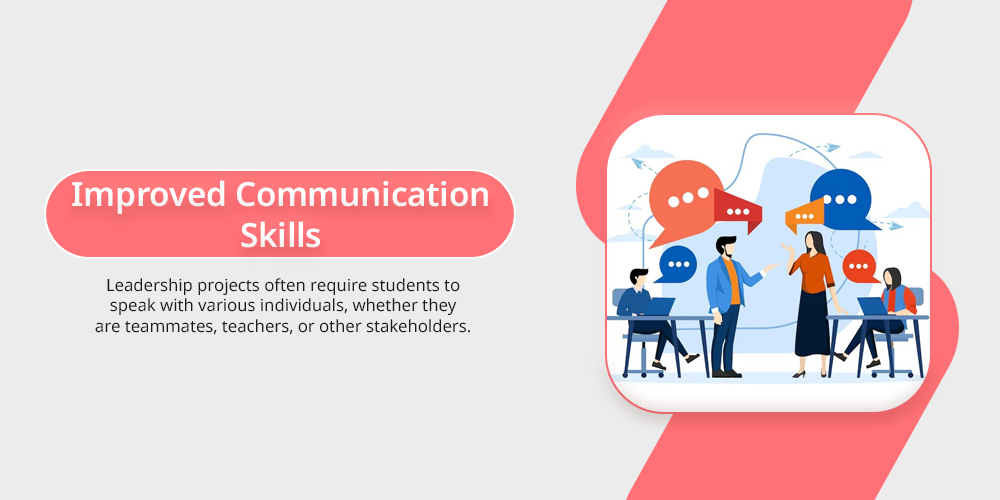
Leadership projects often require students to speak with various individuals, whether they are teammates, teachers, or other stakeholders.
This exposure helps students build better communication skills, including how to present their ideas, negotiate, and listen effectively.
4. Positive Relationships
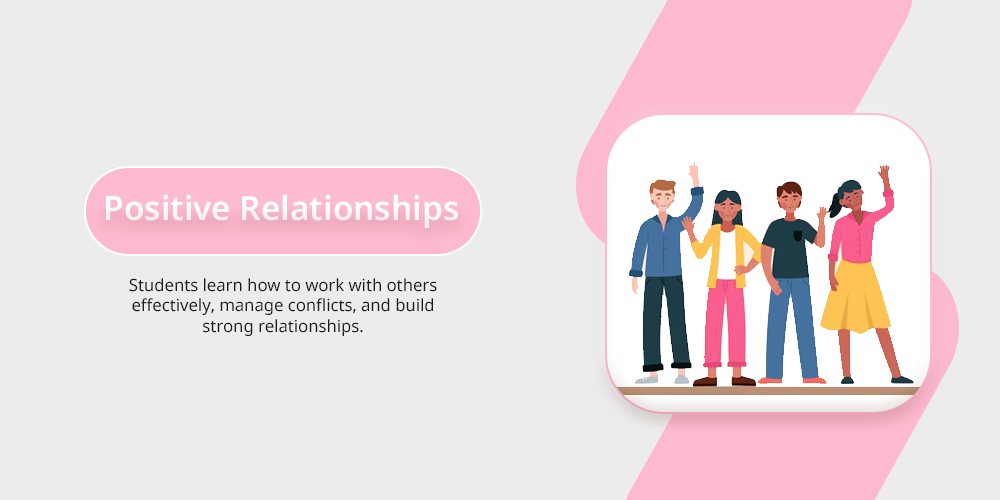
Leadership activities often emphasize teamwork and collaboration. Students learn how to work with others effectively, manage conflicts, and build strong relationships.
These experiences help them build trust and respect within a group, which is vital in both personal and professional settings.
5. Building Resilience
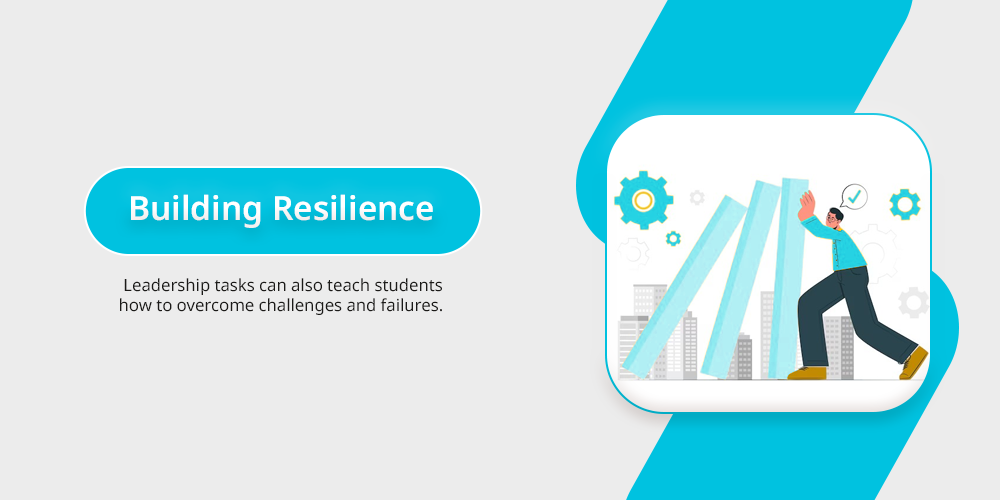
Resilience is one of the most crucial life skills, and leadership experiences are a great way to develop this trait. Leadership tasks can also teach students how to overcome challenges and failures.
In leadership roles, setbacks are inevitable, and students learn how to bounce back from difficulties, adapt, and persevere.
Wrapping Up
Engaging in leadership activities is crucial for students. It helps them build confidence, enhance communication skills, and develop emotional intelligence.
Through leadership projects, students gain the experience of managing teams, overcoming challenges, and communicating effectively. These are all valuable life skills that will serve them in the future.
By participating in a variety of leadership activities, students can prepare themselves for greater responsibility and develop a mindset that embraces challenges and opportunities.
With early exposure to leadership, students are better equipped to make a positive impact on their communities, schools, and the world.
Leadership is not just about holding a position of power but also about taking initiative, inspiring others, and making a difference.


